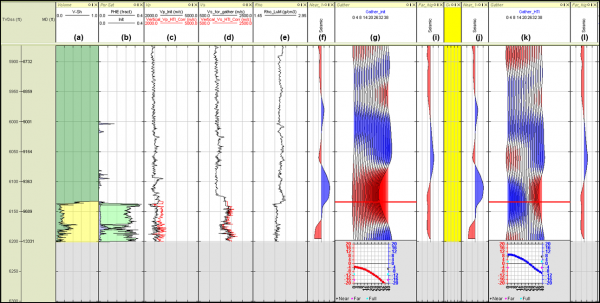RokDoc-Anisotropy
Seismic anisotropy is widely observed in survey and log data alike. For some, it’s an issue that needs to be removed or corrected for in the data and for others it’s something that gives information that can be exploited; at Ikon Science we have tools and expertise available for both.
Velocity data measured in a borehole is subject to the local anisotropy and will need correcting before it can be compared to seismic derived velocity. For well-ties made in a deviated well, there can be a mismatch between synthetic traces computed from the log data and the corresponding seismic traces. You can correct this miss-match with RokDoc by building a model of the local anisotropy and “verticalising” the borehole velocity before computing your synthetics, giving you a greater confidence in the fit of your well-ties.
In the sub-surface, it is common to find anisotropy due to the fine layering of the rock mass, which causes the P-wave velocity to be faster when measured horizontally compared to vertically. With a measurement of the anisotropy parameters made using RokDoc’s multi-well analysis tool, today’s seismic processors can obtain an improved image of the subsurface by taking the anisotropy into account.
Fracturing in a reservoir can be identified from the changes in velocity as it is recorded in different directions, with a faster P-wave associated with a measurement made parallel to the dominant fracture strike due to the fact that rocks are stiffer this direction. In RokDoc, we have analysis tools set up to measure the strike direction from VSP data and to estimate the amount of fracturing. Fractures also give changes to the direction in which a shear-wave oscillates, which RokDoc-VSP can identify and exploit to help in characterising your reservoir.

